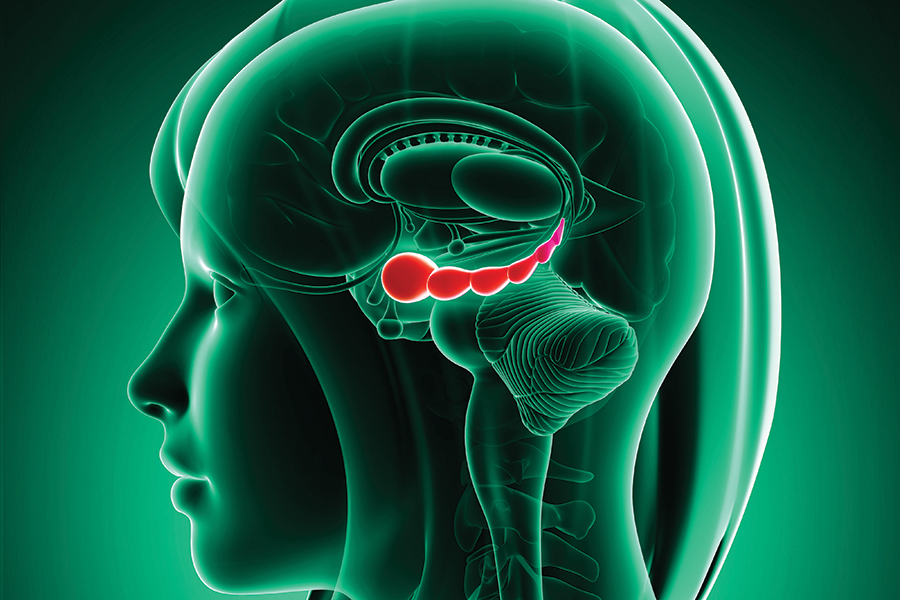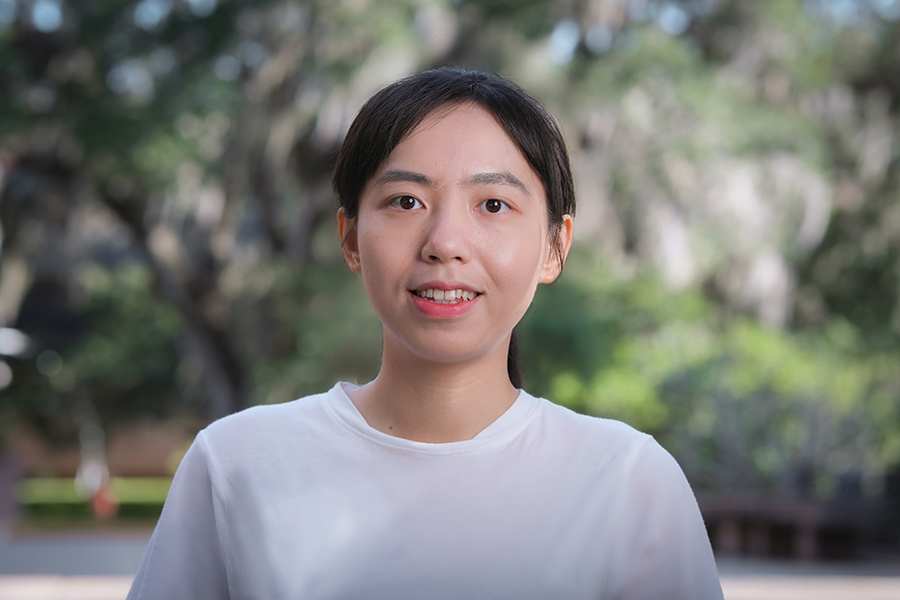Decoding the Matrix
Doctoral student Yuanyao Tan combines statistical models and brain imaging to uncover innovative medical solutions

What if someone receiving the devastating diagnosis of Alzheimer’s disease could immediately access personalized treatment based on their demographic details and brain physiology, a plan that could delay progression of debilitating symptoms?
That’s the future envisioned by Florida State University biostatistics doctoral student Yuanyao Tan who applies unique mathematical methods to brain imagery in pursuit of data that could unlock early interventions for a disease that affects over 6 million Americans today, a number projected to more than double by 2050.
Now in her fourth year in the FSU Department of Statistics, Tan’s work using statistical modeling and demographic data analysis aims to generate new perspectives in the worldwide interdisciplinary study of Alzheimer’s. Her work is, in part, inspired by a familial connection to the disease.
“I want to address the everyday problems faced by individuals needing specialized treatment through the key question: Is there a statistical solution for this?” Tan said.

The hippocampus, one part of the brain affected by Alzheimer’s, is part of the limbic system, which manages our functions of feeling and reacting. This complex structure is embedded deep in the brain and is responsible for long-term memory formation, memory retrieval and spatial memory. The hippocampus can change shape as people age due to decreasing brain elasticity, life stressors, or injury, which is why individuals showcasing sudden behaviors like getting lost or misplacing things may be experiencing initial signs of the disease.
Tan specializes in functional and manifold data analysis, a statistical method used to interpret high-dimensional sets of data where the number of variables observed are close to or much larger than the number of observations. High-dimensional data, or a data matrix, is typical in health care because human genetic diversity leads to varied responses, driving data collection for nuanced genetic insights. Tan applies manifold data analysis to hippocampus images collected from different subjects to uncover patterns in the data matrix that connect back to physical manifestations of Alzheimer’s in a person’s life.
People may experience varied impacts due to differences in gender and in aging; however, the data reflecting these changes can be organized into subgroups related to disease progression that reflect common elements of change among a group of individuals. Tan’s work has significant implications for diagnosing and treating Alzheimer’s, as manifold data analysis allows her to maintain the original organization of data on the hippocampus and create four classes of subgroups that can be used to inform new treatment plans.
“My work analyzes the relationship between brain imaging data, such as the shape of a person’s hippocampus, and the demographic factors associated with this data, like age and gender, using manifold data analysis,” Tan said. “We leverage nontraditional methods to investigate the ways in which human variables impact the onset and effects of Alzheimer’s disease.”
Tan has worked with her major professor Chao Huang, FSU assistant professor of statistics, on several projects using 2D and 3D data on the brain, and she has collaborated with Elizabeth Slate, FSU’s Duncan McLean and Pearl Levine Fairweather Professor of Statistics, on another project involving functional and shape data analysis. For Tan, biostatistics is a means of connecting abstract mathematical tools to real-life problems and solutions in modern health care.
“Yuanyao fosters an environment of expertise by bringing in fresh perspectives and stimulating intellectual discussions that promote interdisciplinary research,” Huang said. “Her ability to convey complex concepts and share her knowledge contributes to the department’s reputation for educational excellence.”
Tan earned a bachelor’s degree in 2018 from Guangdong University of Technology and a master’s in early 2020 from Sun Yat-sen University, both in Guangzhou, China, before coming to FSU where she has been captivated by the university’s outstanding research reputation across psychology, biology and physics. Tan began her doctorate in biostatistics in Fall 2020 and has since presented at conferences hosted by the International Chinese Statistical Association and the Society for Industrial and Applied Mathematics.
Tan has several internships lined up that she expects will help guide her towards the right job once she graduates next fall. Most of all, she hopes her biostatistics contributions show that concrete applications of mathematical tools can lead to better health care outcomes for patients with brain disorders.
“My efforts to understand Alzheimer’s through statistical modeling would be impossible without inspiration from others I’ve met in labs and at conferences,” Tan said. “The essence of manifold data analysis is examining an entire matrix of information instead of breaking it apart to understand individual pieces, and I believe this same idea can be applied to my personal experience by envisioning the entire picture of what my research can do for those around me.”
Hannah Fulk is an FSU alumna who earned a bachelor’s degree in public relations in 2022. She is currently pursuing a master's degree in media and communications studies with a certification in digital video production and is set to graduate in May 2024.

